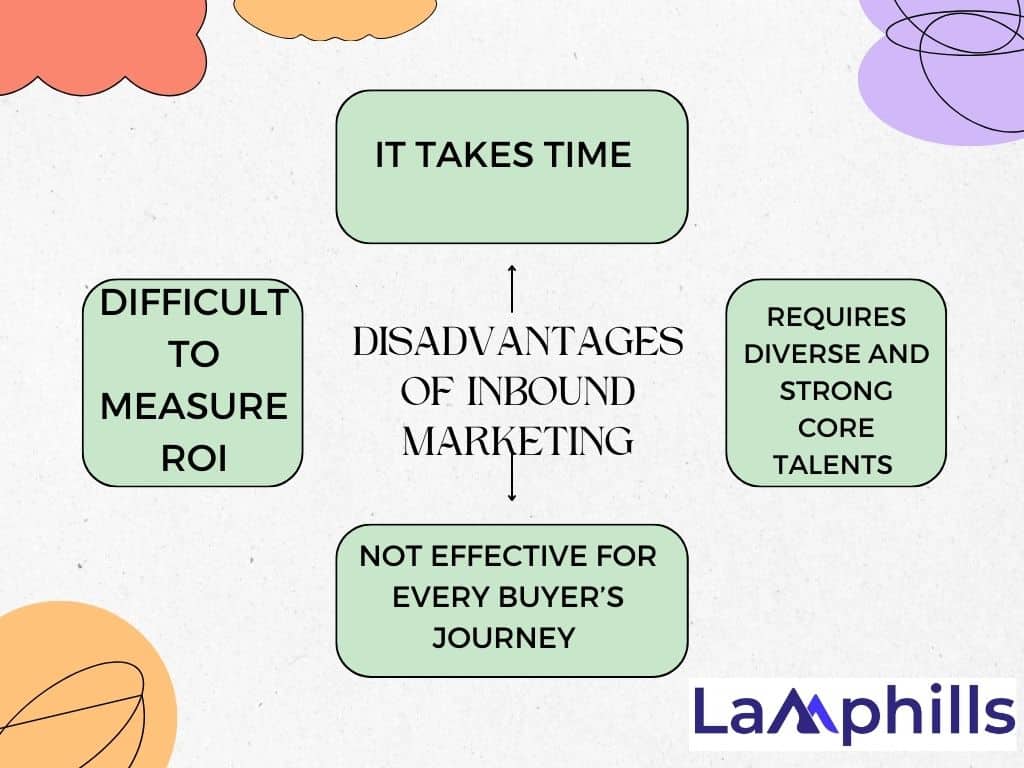I have navigated the marketing world for several years. Also, I have gotten many opportunities to engage in inbound and outbound marketing strategies. Each approach offers clear and different pathways for attracting and retaining customers, with unique benefits and challenges. The main difference I have discovered in inbound vs outbound marketing is how companies reach out to their customers.
I have been tasked on so many occasions to produce and update my company’s marketing strategy, and most of the time, I will be confused about whether to use an inbound vs outbound strategy for the update.
An outbound strategy takes an approach in which brands put themself in front through billboards, TV ads, etc. Inbound marketing helps to bring customers to companies through engaging and informative content.
In this article, I will share some experiences, stages, and tips for inbound vs outbound marketing that will help you understand which is best for your brand.
Key Facts
- The main focus of inbound marketing is the attraction of customers to our products and services. Inbound Marketing is designed to draw customers in instead of sending messages and pushing ads
- Instead of shouting your message to your audience, inbound marketing aims to pull the audience to your brand by creating search engine-optimized content that will rank on Google’s search engine page.
- The main aim of an outbound marketing strategy is to capture the attention of the audience with the marketing message.
Understanding Inbound Marketing
The main focus of inbound marketing is the attraction of customers to our products and services. Inbound Marketing is designed to draw customers in instead of sending messages and pushing ads. It is known as “Pull marketing” which is the main tactic used in Inbound marketing.
They look for products or content that will fulfill a need and also solve problems. Therefore, your content should explain the importance of your products to your customers, and answer key questions.
Inbound Marketing centers on engaging the targeted audience with different types of content. These contents include blog posts, infographics, social media, email newsletters, quizzes, etc. Other things that help people find and engage with marketers’ content are paid search and native advertising.
Through creating informative, fun, and engaging content, your company could improve its reputation in your customer’s eyes by increasing social media engagement, and web traffic.
When I started studying inbound marketing, what amazed me the most was the concept of creating content that would naturally attract customers—developing a blog for my company, and focusing on my target audience’s choice of topics were the first things I did. The results were promising but it was a gradual process. I found out a lot of things, like social media engagement, creating content, etc.
Furthermore, we focused on blog posts, infographics, and videos that addressed our audience’s points and helped build their trust and authority. We were able to build a community around our brand by responding to comments, participating in conversations, and sharing content.
Read also: Elevate Your Brand’s Marketing Strategies With PR Boxes
Stages of Inbound Marketing
During my study of inbound marketing, I also found out there are some stages of inbound marketing which include: attraction, engagement, and delight. Together, these convey prospects to clients.
#1. Attract
This is the core difference between inbound and outbound marketing. Instead of shouting your message to your audience, inbound marketing aims to pull the audience to your brand by creating search engine-optimized content that will rank on Google’s search engine page.
The most important thing about inbound marketing is giving out unique content that brings the audience straight to you.
#2. Engage
Once you have gotten the attention of your audience, you need to engage them with more interactive content that will educate them about your brand.
After understanding their options, most customers do their research, buy at their convenience, and make their own decisions. This stage is most concerned with giving your audience the resources they need to make decisions. After all, it is not the goal to get a one-time customer but a lifetime customer who will always believe in your product and identify with your brand.
#3. Delight
The unique way to delight your customers is by providing a top-tier experience that will make them over-satisfied and they will recommend your brand to others. A recommendation is a very lucrative marketing tactic out there. This stage aims to improve customers’ experiences, and satisfied customers will become your brand’s advocates.
Read also: SMART PR Goals: Examples & All You Need
Inbound Marketing Examples
I have spent years in the marketing field and have also gotten my share of experience in Inbound marketing strategy.
There was a time when I served as a marketing manager for a small tech startup, which is one of the most memorable and successful inbound campaigns I have done.
Inbound marketing has many forms. There are some common content mediums that you can use to power your inbound marketing strategies.
- Constant posting on social media
- Content marketing
- Email marketing
- Customers referral
- Community building and proper leadership.
Benefits of Inbound Marketing
There are many benefits you can get when you use an inbound marketing strategy, and they are:
#1. Inbound marketing makes it possible for customers to read your posts and engage in them on their own time.
#2. Inbound strategies require less finance. The only investment that is highly needed is time and creativity.
#3. It helps high-quality content drive traffic and also generates some leads after publication.
#4. You can build a better customer relationship through the provision of an upfront value. We built a lot of strong relationships with our customers, which made them continue patronizing our brand.
#5. Leads are being generated daily because your websites and content are updated regularly.
Disadvantages of Inbound Marketing

Not every company is meant to use inbound marketing because there are setbacks if you depend solely on digital content. The disadvantages of using Inbound marketing include
#1. There is continuous maintenance, which ensures that the contents speak to the evolving needs and wants of the consumers.
#2. It takes time to search and develop content that will entice customers.
#3. A lot of tools are needed for the implementation of integrated cross-channel campaigns.
Read also: Everything You Should Know About PR Marketing
Understanding Outbound Marketing
Outbound Marketing involves sending your messages out to a wider audience. This involves using TV and radio ads, telemarketing, etc. Whenever you want to advertise, you are thinking of outbound marketing because it will help you reach a wider audience.
Companies can contact their targeted customers through cold calling, cold emailing, direct mail, etc. The main aim of an outbound marketing strategy is to capture the attention of the audience with the marketing message.
Furthermore, Outbound marketing is proactive. Brands do take their messages to meet their targeted audience rather than waiting for the customers to come to them. Outbound marketing can make a significant impact on an organization if it is executed strategically and the right audience is targeted properly.
However, the rise of digital technologies has challenged the efficacy of outbound marketing.
Outbound marketing has a lot of examples that include direct mail, cold calling, TV and radio ads, billboards, conferences, etc.
There are so many ways that I utilized outbound strategies because inbound marketing was slow. These ways include:
- I started running ads on Google and social media platforms, which helped me reach a wider audience quickly.
- We participated in trade shows and events, which made us advertise our products directly.
- Personalized emails were sent to potential customers. Through this, we were able to create awareness and generate some leads.
Example of Outbound Marketing
There was a day I was driving on the highway and I saw a billboard for a furniture store in the area. I thought that it was not bad to invest in a new couch, but I kept it at the back of my mind.
A few weeks later, as I was watching the news, I saw a commercial for the same furniture store.
Seven months later, I got some emails and found a discount coupon for the furniture store. I told myself it was time for me to get the new couch after all, I just got a bonus at work. Finally, I decided to buy the couch.
I never wanted to buy a couch, but because it kept popping up, I now shifted my attention to buying one.
Benefits Of Outbound Marketing
The benefits you will get from using the outbound strategy, are
- It drives traffic, delivers results quickly, and generates leads instantly.
- A larger and more diverse audience could be reached for the launch of your products.
- Messages sent were able to be controlled. All the messages we sent during the time we were using outbound marketing were being controlled by us.
Disadvantages of Outbound Marketing
- Outbound marketing tends to always interrupt people while they are doing something ( while watching YouTube, social media platforms, television, etc) Your brand is at risk if it is overdone.
- It is hard to pinpoint outbound marketing. The control you have over your messaging and where it is displayed is only a soft targeting.
- It has been very difficult to measure the success rate of large campaigns, commercials, and other outbound marketing methods. If there is no increase in sales, it is tough to detect the impact of these ads on your business.
Inbound vs Outbound Marketing
Outbound marketing is all about buying ads, having email lists, and maximizing brand awareness so that the product will be purchased by customers.
On the other hand, inbound marketing draws audiences in with content that aligns with their interests through awareness and engagement, until they convert to the brand.
Inbound marketing draws customers by targeting them instead of searching for audiences and advertising blindly. Customers are brought to the brand through the messages sent.
In addition, another difference between outbound and inbound is that outbound utilizes both offline and online tactics, while inbound capitalizes on online.
Outbound marketing prioritizes your potential customers by pushing the message in front of them, while inbound marketing finds customers by searching for their interests.
Inbound is based on educating customers, while outbound is awareness-based. None of them is bad to use but it depends on the strategy that will align with your brand goals. It usually makes a lot of sense if you can use both, but it depends on your audience, market, and opportunities around you.
Let us look at the overview of the difference between Inbound vs Outbound marketing strategies
| Inbound | Outbound |
|---|---|
| Pulls in audiences | Pushes for a wider audience |
| The customer is the main target | The product is the main target |
| Tracking customer’s engagement is easier | It is hard to track customer engagement |
| Uses opt-in emails, blogs, and social media platforms as tactics | Uses billboards, ads, magazines, scripts, and cold emails as tactics. |
| Earns attention | Buys attention |
| Grows rapidly | Grows gradually |
| Educates audience | Persuades audience |
Which Method Is Right for Your Business?
Which is better for your business, Outbound or inbound marketing?
For both to be effective, depends solely on your business objectives, what you want to market, and the kind of people you want to attract.
When you want to decide between inbound marketing vs outbound marketing, you need to check on the targeted audience. In the SaaS sales funnel, it has been noticed that inbound marketing closes more deals.
Inbound marketing has been viewed as more effective because it generates more leads than the outbound strategy.
The issue now is that people are getting tired of being interrupted by marketing tactics and they are being ignored.
Things Needed to Get Started
Most modern marketing strategies rely on the combination of both inbound and outbound marketing strategies, which will work together to increase the number of customers your brand will have. Through the development of a powerful content library that will attract, engage, and entertain my audience, I was able to bring valuable lifetime customers to my brand.
Meanwhile, having a sophisticated approach to outbound marketing can directly nurture leads who may benefit from your company.
Conclusion
In terms of marketing strategies, both inbound and outbound marketing have their place. In my personal experience, I have found out that outbound marketing can boost results but inbound marketing capitalizes on building lasting growth. For you to be able to create a balanced and effective strategy for your business, you must understand the strengths and weaknesses of both approaches.
Frequently Asked Questions About Inbound vs Outbound Marketing.
Is SEO Inbound Marketing?
Of course, SEO is a very good example of inbound marketing. It uses search traffic to create content for a certain audience. By doing so, it attracts people who are likely to buy products from your brands
What Are Outbound Marketing Examples?
Cold emailing, direct mail, billboards, event sponsorships, etc are all examples of outbound marketing. TV, radio, and print ads are also examples of outbound marketing.
What Is the Difference Between Inbound and Outbound Prospecting?
The initiator of the sales relationship is the biggest difference between inbound and outbound. In inbound sales, the prospect first reaches out to them, while the sales representative focuses on the prospects in outbound sales.
Is Google Ads Inbound or Outbound?
Google ads are the most efficient inbound marketing channel. When customers look for our product or service, it is referred to as inbound marketing. But, if we are the ones searching for customers, sending letters, and advertising on social media platforms, we can call this an outbound marketing strategy.
Related Articles
- How Many Backlinks Do I Need to Rank High on Google? Expert Answer
- MARKETING PROJECT MANAGEMENT: Unveiling Insider Tips and Strategies for Success






